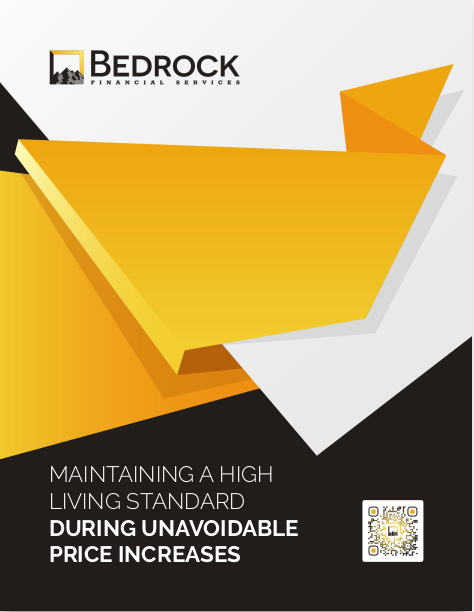Key Takeaways
-
Lead automation should support—not replace—your authentic client relationships, working behind the scenes to enhance trust and timing.
-
A smart system balances personalization with scalability, guiding prospects with subtle nudges rather than aggressive pitches.
The Real Role of Automation in Your Sales Process
In 2025, automation tools are more advanced than ever. But that doesn’t mean they should take center stage. If you’re a financial professional, automation should feel like a helpful assistant—quietly organizing, reminding, and preparing, not one that barges in uninvited or floods your prospects with impersonal messages.
Your lead automation system should serve your workflow, not dominate it. The goal is to free up your time for real conversations—not bury your leads under sequences that feel robotic.
Why Pushy Automation Backfires
Clients can spot a scripted sequence from a mile away. The moment your communication begins to feel like a machine is running the show, your credibility takes a hit. Here’s why over-automated sales processes are damaging in 2025:
-
Inboxes Are Oversaturated: Automation blasts are everywhere. If your message doesn’t feel personal, it gets deleted or marked as spam.
-
Trust is Scarce: People are more protective of their time and data than ever before. Any hint of being treated like a number damages trust.
-
Regulations Are Tightening: Compliance requirements mean every outreach must feel appropriate and timely—or you risk more than just an unsubscribe.
The best automation today is nearly invisible. It feels like you’ve just remembered the perfect moment to reach out.
What a Quiet Assistant Approach Looks Like
Think of lead automation like a well-trained office assistant. Their job isn’t to pitch for you—it’s to make you look polished, prepared, and attentive. Here’s what that looks like in practice:
-
Contextual Follow-ups: A prospect visits your retirement planning page twice in a week? A short, relevant check-in email can be automatically queued—without sounding like a pitch.
-
Subtle Tracking: Your automation tools should note behavior (like a download or form submission) and cue you to take action when timing is optimal.
-
Quiet Reminders: Your CRM can remind you of birthdays, renewal dates, or key policy milestones so your outreach feels timely and thoughtful.
Automation done right is like having a calendar that reads your mind—it nudges you at just the right time, never loudly.
Set the Right Expectations From the Start
Automation should enhance human connections, not replace them. One way to make this work well is to set expectations early on. When a lead opts in or requests information:
-
Let them know what to expect. Will they get a weekly tip from you? A call in two days? Say so.
-
Make unsubscribing easy and respectful. If someone’s not ready, don’t push. Let them leave without friction.
-
Use your name—not a company alias—in every automated message. The more human the message feels, the better the response.
Map Your Lead Lifecycle in 5 Stages
If you’re not clear on how your prospects move from first click to client, your automation will always feel misaligned. Map out your lead journey with these key stages:
-
Discovery – A lead finds you via a referral, ad, or social post.
-
Interest – They visit your website, fill a form, or read your content.
-
Evaluation – They compare, research, and decide if you’re the right fit.
-
Decision – They respond to a call, book a meeting, or request a quote.
-
Onboarding – They become a client and receive follow-up, support, and resources.
Automation should guide—not rush—a prospect through these stages. The messages, timing, and tone should reflect the stage they’re in.
Balance Between Personalization and Scalability
The trap many professionals fall into is choosing between doing everything manually or handing it all to an automation platform. You need a hybrid model:
-
Personalized templates: Use templates as a base, but add one line that reflects the recipient’s behavior or interest.
-
Micro-segmentation: Instead of sending one message to your full list, break it down—retirement prospects, business owners, Medicare-eligible clients, etc.
-
Dynamic scheduling: Use automation to send messages only during working hours in the lead’s local timezone.
The more your automation feels tailored, the less it feels automated.
Avoid These Automation Mistakes in 2025
Even with good intentions, financial professionals can fall into patterns that undermine their outreach. Watch out for these common mistakes:
-
Overloading new leads with multiple emails, texts, or calls in the first 48 hours
-
Skipping manual review of automation messages, which may include errors or irrelevant info
-
Using outdated content that references years or regulations no longer current
-
Failing to audit automations at least quarterly to ensure the journey still reflects your brand and services
Smart automation evolves. Review and update your sequences frequently, especially when regulations or product offerings change.
Invest Time in Setting It Up Once—Then Keep Refining
The best systems don’t happen by accident. You need to:
-
Document your workflows—What happens after someone books a call? Downloads a whitepaper? Attends a webinar?
-
Define triggers and goals—Automation works best when there’s a clear cause-and-effect logic.
-
Create fallback logic—If a lead doesn’t open two emails in a row, should you pause, retry with new subject lines, or call them instead?
Setup takes time, but maintenance requires less than an hour a week. That’s a worthwhile trade-off for the clarity and time you gain.
Make It About the Lead, Not the Sale
When your automation is designed around helping the lead—not closing the deal—you build long-term trust. That means:
-
Sharing useful content: Retirement timelines, tax season reminders, healthcare eligibility changes.
-
Offering checklists and calculators: Tools that help them plan better without obligation.
-
Providing soft calls-to-action: Instead of “Buy now,” offer “Schedule a no-pressure consultation.”
Helpful automation nurtures. It doesn’t corner.
Compliance and Privacy Still Matter—A Lot
Financial professionals have tight boundaries when it comes to marketing. In 2025, privacy rules are strict and enforcement is more proactive. Your automation must align with:
-
Do Not Contact lists
-
Proper email consent laws (like CAN-SPAM or GDPR for international clients)
-
Secure data storage for any personal client details
Always include opt-outs, and never automate messages using sensitive personal or financial data.
How to Know If Your Automation Is Working
You don’t need vanity metrics. Instead, track indicators that show whether your automation supports engagement:
-
Open and click rates by segment
-
Response time to follow-up actions
-
Lead-to-meeting conversion rates
-
Unsubscribe rates—a spike may mean your messages feel pushy or irrelevant
You’re aiming for efficiency without erosion of trust. If your automation helps you get more meetings without sounding like a robot, it’s working.
Quiet Systems Create Stronger Relationships
Lead automation shouldn’t feel like pressure—it should feel like professionalism. When your system is working silently behind the scenes, your clients feel attended to, not targeted. You appear responsive, not reactive. Strategic, not salesy.
If you’re ready to use automation the right way, we’re here to support you. At Bedrock Financial Services, we help professionals like you build scalable systems that retain your voice and values. Let us help you stay efficient without losing the personal touch that built your brand in the first place.







